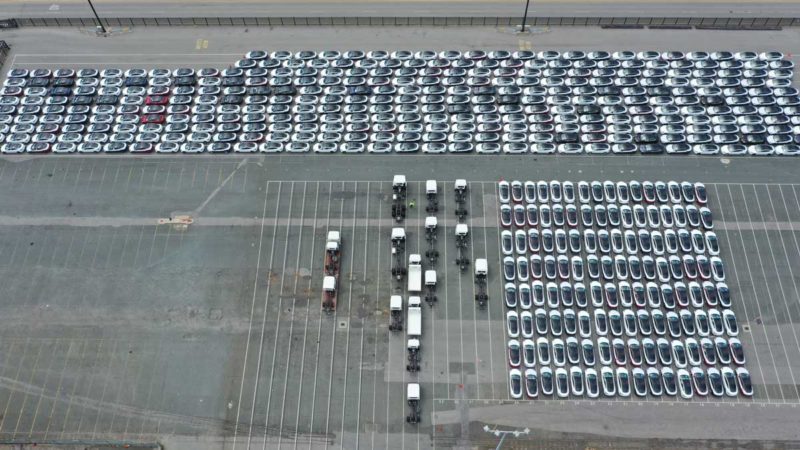Hundreds of so-called “unicorn” Model 3s have been captured lined up at Fremantle Port in Western Australia, just part of a predicted “Tesla tidal wave” for Australia’s western-most state comes to fruition.
The arrival of the Model 3s was first flagged by Tesla shipping tracker @Vedaprime on Twitter, who noted that, “Tesla Perth will be using a much larger capacity delivery location this quarter.”
By the end of 2021, it is thought that Tesla will have shipped as many electric cars to Australia as it has in all its previous years combined.
For Western Australia, it is expected around 800 will be delivered to customers this quarter from a new warehouse just 3km from its new service centre.
“The King Edward Road delivery facility will provide Tesla customers a smooth and efficient delivery experience without bottlenecks and interruptions,” said TOCWA secretary Harald Murphy in a note to The Driven.
“Like all tsunamis, the magnitude of what’s coming can’t easily be seen at the start. While a single shipment of 461 is a lot of cars, that number will be eclipsed over and over again.
“Back in 2017 when there were less than 100 Teslas in Western Australia, a single shipment of over 460 cars seemed laughable. Four years later, no one’s laughing. We are all simply in awe of how profoundly people’s demand for Teslas has exploded.”
Passed truckload on the Hume last week headed south at Mullengandra. pic.twitter.com/FoMMtCBcOV
— Jules Boag (@julesboag) November 28, 2021
The vehicles – all 461 of them – are now lined up at the Fremantle docks, shared on Youtube by TOCWA in a drone video on Saturday (see the bottom of this article).
This is the largest shipment of Tesla Model 3s to WA according to Vedaprime, and it will not be the last. But what is also significant about this shipment is the fact that all of these vehicles are of the “unicorn” variety, so named because they will have the original acceleration of the 2021 Model 3, but also with the extra range of the 2022 Tesla Model 3.
In early November, Tesla started making Model 3s in Shanghai with a larger 62.3kWh battery, giving the base variant electric sedan (now stripped of its Standard Range Plus moniker) 491km WLTP range instead of the former 448km range (noting that real-world range is less than WLTP lab tests).
At the same time, Tesla reduced the 0-100km/hr acceleration from 5.6 seconds to 6.1 seconds.
But, the remaining vehicles to arrive in 2021 will have both the greater range (which will apparently be more like 444km according to a test by an owner in New Zealand), plus the faster acceleration; which is why they are dubbed “unicorns”.
While 461 Model 3s is a relatively modest number of vehicles compared to legacy automakers, TOCWA’s Rob Dean who argues that when you compare Tesla’s marketing budget – which is basically nil – to that of incumbents like Toyota, the Californian upstart is doing a spectacular job.

Bridie Schmidt is associate editor for The Driven, sister site of Renew Economy. She has been writing about electric vehicles since 2018, and has a keen interest in the role that zero-emissions transport has to play in sustainability. She has participated in podcasts such as Download This Show with Marc Fennell and Shirtloads of Science with Karl Kruszelnicki and is co-organiser of the Northern Rivers Electric Vehicle Forum. Bridie also owns a Tesla Model Y and has it available for hire on evee.com.au.


